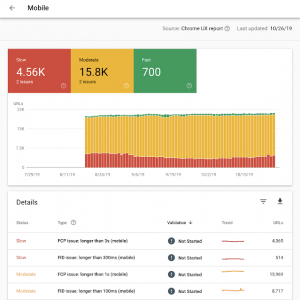Researching how to produce the best content can lead a person down a rabbit hole of optimization. Countless articles explain how H1s and H2s can both make and break a page. That adding images will improve your ranking until they slow your page down. Then you find E-A-T. You’re not sure what it is, but you know it relates to the quality of the page.
What is E-A-T?
Expertise, Authoritativeness, and Trustworthiness. These are the guidelines that Google uses to evaluate the quality of your page. Some of them can be achieved through simple quality content, and some need some outside work. This is why your content department needs to be multifaceted; creating great web pages is a team effort.
Expertise
Part of quality content is quality info. If you aren’t an expert in the area you are writing on, you need to cite your sources and maybe bring on an expert to help you write your piece. Google claims to use a holistic approach to ranking pages, meaning the actual content gets evaluated not just fed through an algorithm.
A good rule of thumb: if you are providing advice or information, you need to make sure that the information your giving can be backed up by people way more qualified than you.
Authority
Authority is proving your expertise. It means that the author should be clear to the reader and any visitors can easily contact the company or learn more about it. If you are speaking with authority, you need to be able to explain where your attitude is coming from.
Domain authority is important for this and this is where you might need to do a bit of PR work. Chances are your website doesn’t have a high domain authority if it hasn’t been fully established yet, but luckily there are websites that do. This is an opportunity for link-building, or getting articles on more authoritative sites to link to your piece. Either that or you could reach out to more authoritative sites and ask if you can guest-publish an article on their site, linking to your site. Either way, it helps you look like you hang around with a good crowd.
Trustworthiness
Is your page a safe space? Do users feel like they might get a virus if they click on anything? Users should feel comfortable exploring your website. Beyond that, your web page should have a point. It should exist to help someone. The purpose of your page should be clear, as should the purpose of the website as a whole.
How does E-A-T affect my page?
It’s important to remember that E-A-T are guidelines and not hard and fast ranking rules. Google has, on multiple occasions, explained that there are no algorithms that spit out ranking numbers based on E-A-T. Instead, there are hundreds of ranking algorithms that all work together to create a page’s rank.
Instead of thinking of E-A-T as a series of gymnastics elements that must be perfectly executed to achieve a score of 9.8, think of it as a way to ensure your posture, uniform, and style are optimized before going out and dancing before the judges (I don’t know gymnastics I’m sorry to any gymnasts who might be reading this). They don’t judge directly on those aspects, but they certainly help.
I’m still confused. Can you just do this for me?
If you are a law firm, then yes! Mockingbird works in website building and maintenance to make sure it looks trustworthy, PR for link building, and can help to plan content production. Contact us today to help you understand your website!
